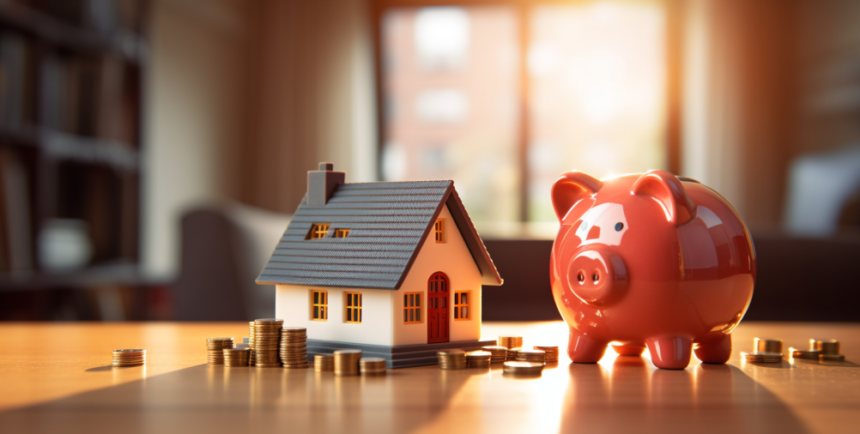There are many reasons to invest in real estate, but every investor shares a common goal: to achieve a positive return on investment (ROI).
What is ROI in Real Estate?
ROI in real estate measures the profitability of an investment property. It’s the ratio of net profit to the initial investment. In simple terms, a higher ROI indicates a more lucrative investment, while a lower one suggests lower returns.
Formula for Calculating ROI in Real Estate
Calculating ROI in real estate is simple:
ROI in real estate = (Net Profit / Initial Investment) x 100%
Here’s a real-life example:
- Initial investment: $250,000 (home price) + $50,000 (renovations) = $300,000.
- Annual rental income: $2,000/month x 12 = $24,000.
- Annual expenses: Property taxes ($4,000) + Maintenance ($3,000) + Property management (10% of rent = $2,400/year) = $9,400.
- Net profit: $24,000 (rental income) – $9,400 (expenses) = $14,600.
- ROI: ($14,600 / $300,000) x 100% = 4.867%.
These numbers can and will vary in the future. For example, you could increase your annual rental income and/or reduce your property management fee to boost your ROI.
Factors Influencing ROI in Real Estate
There is no shortage of factors that influence ROI in real estate. Understanding these allows you to make informed investing and management decisions. Let’s review these factors in greater detail.
Investment strategy
Different investment strategies lead to varying ROI outcomes. For example:
- Fix and flip: Involves purchasing properties at a lower-than-market price, renovating them, and then selling at a profit. ROI depends on the renovation costs and the sale price achieved.
- Rentals: Investors buy properties to generate a consistent rental income. ROI is influenced by rental rates, occupancy, and property maintenance.
Location and market trends
A property’s location directly affects its value and potential returns. Prime locations often garner higher rents or sale prices.
Furthermore, understanding market trends helps anticipate future ROI. For instance, investing in an emerging neighborhood can yield high returns as the area develops.
Property type
Different property types cater to distinct market segments:
- Residential: Properties like homes, condominiums, or townhouses. ROI is influenced by factors like family growth in the area and urbanization.
- Commercial: Spaces like offices or retail stores. ROI here is often dependent on the business environment and commercial demand.
Property age and condition
Older properties might require more maintenance, affecting the net returns. However, some “vintage” properties can command premium prices due to their unique charm. The property’s condition at purchase can also determine renovation costs, impacting the initial investment.
Financing terms
The terms under which a property is financed can significantly influence ROI. High interest rates or unfavorable loan terms can eat into potential profits. Conversely, strategic refinancing or leveraging equity can enhance returns.
Economic and regulatory factors
External factors like economic recessions can depress property values and rental incomes. Changing regulations, such as property tax hikes or rent control policies, can also affect ROI.
Property management and tenant quality
Efficient property management can optimize ROI by ensuring regular maintenance, high occupancy rates, and prompt rent collection. Simultaneously, quality tenants reduce wear and tear, lowering maintenance costs and improving the likelihood of consistent rental income.
Maximizing ROI for Real Estate Investors
For real estate investors, a primary objective is to maximize ROI. Achieving this involves strategic decision-making and astute management.
Here are five tips to optimize ROI. By incorporating these strategies, you can bolster profitability.
1. Location selection: Invest in prime locations or emerging neighborhoods. Areas with growth potential or established demand often yield higher returns.
2. Efficient property management: Employ or partner with reputable property managers. Effective management ensures properties are well-maintained and tenanted, and that rents are collected promptly.
3. Regular upgrades: Periodically update and renovate properties. Modern amenities and appealing aesthetics can command higher rents or sales prices.
4. Optimal financing: Secure favorable financing terms. Lower interest rates and flexible loan structures can reduce costs and boost net returns.
5. Thorough tenant screening: Vet potential tenants diligently. Reliable tenants pay on time and are less likely to damage the property, reducing potential expenses and leading to consistent income.
Real Estate ROI FAQ
What is a good ROI in real estate?
A good ROI in real estate typically ranges from 8% to 12%, though it can vary based on the market and individual investment strategy. Factors such as location, property type, and financing can influence the expected return.
What is the difference between ROI and ROE in real estate?
In real estate, ROI measures the profit made on an investment relative to its cost. ROE (return on equity) measures the return on the equity portion of the investment, accounting for factors like mortgage and leverage.
What is the difference between ROI and yield in real estate?
ROI in real estate refers to the profit made relative to the total cost of the investment. Yield specifically refers to the annual rental income as a percentage of the property’s value, excluding any capital appreciation.
What is the average ROI in real estate?
The average ROI in real estate varies by market and property type, but historically it hovers around 8% to 10%. Remember: ROI is influenced by factors such as market conditions, investment strategy, and property management.
Final Thoughts
Real estate investing offers opportunities for financial growth, with ROI a key measure of your success. To maximize ROI, prioritize due diligence and become comfortable adapting to changing market dynamics. A strategic approach and continuous learning positions you to achieve a positive ROI that allows you to continue chasing your real estate dreams.
Tired of trying to budget and grind your way to financial freedom, without ever feeling closer to it?
In this book, David Greene provides a holistic approach to systematically make more money and watch it grow over time. You’ll learn how to unlock your earning potential, adopt new budgeting systems, start your own business, and invest for constant growth so you can become wealthy the realistic way.
Note By BiggerPockets: These are opinions written by the author and do not necessarily represent the opinions of BiggerPockets.








